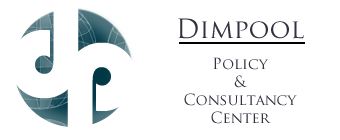New data on attitudes to Nagorno Karabakh conflict resolution and Armenia-Turkey relations
ONNIK KRIKORIAN
28 April 2012
This article was first published at blog section of the cross-border online media project Conflict Voices — http://peace.oneworld.am and republished under Onnik Krikorian’s permission.

On 1 March 2012 the Turkish Economic and Social Studies Foundation (TESEV) and Eurasia Partnership Foundation (EPF) held a one-day conference on Turkey’s South Caucasus Agenda: Roles of State and Non-State Actors. Examining the country’s potential role in the region, new data from the Caucasus Resource Research Centers (CRRC) was included in a presentation by Dr. Hans Gutbrod, its regional director.
In particular, CRRC’s 2011 Caucasus Barometer included questions formulated by Thomas de Waal, Senior Associate in the Russia and Eurasia Program at the Carnegie Endowment, which identify current views on resolution of the conflict between Armenia and Azerbaijan over the disputed territory of Nagorno Karabakh. It should be noted, however, that Dr. Gutbrod says CRRC’s Armenian database is still undergoing final cleaning so final numbers may deviate by up to three percent.
The results, of course, will come as little surprise to many following attempts to resolve the conflict since the 1994 ceasefire. The data, however, does provide a clearer picture of the obstacles that need to be overcome.[wpcol_1half id=”” class=”” style=””]![Microsoft PowerPoint - Turkey Caucasus [Compatibility Mode]](http://dimpool.com/wp-content/uploads/2012/04/karabakh-42-12.jpg)
[/wpcol_1half][wpcol_1half_end id=”” class=”” style=””]![Microsoft PowerPoint - Turkey Caucasus [Compatibility Mode]](http://dimpool.com/wp-content/uploads/2012/04/karabakh-13-1122.jpg)
[/wpcol_1half_end]
With the International Crisis Group (ICG) warning of the dangers of an accidental war, coupled with massive military spending and rhetoric from Azerbaijan, the perception of a new conflict from respondents is perhaps most interesting.
[wpcol_1half id=”” class=”” style=””]![Microsoft PowerPoint - Turkey Caucasus [Compatibility Mode]](http://dimpool.com/wp-content/uploads/2012/04/karabakh-22-12.jpg)
Unfortunately, however, opinion on how the conflict can be resolved show the two sides as far away from the idea of mutual compromise as ever.
[/wpcol_1half][wpcol_1half_end id=”” class=”” style=””]![Microsoft PowerPoint - Turkey Caucasus [Compatibility Mode]](http://dimpool.com/wp-content/uploads/2012/04/karabakh-512-12.jpg) [/wpcol_1half_end][wpcol_1half id=”” class=”” style=””]
[/wpcol_1half_end][wpcol_1half id=”” class=”” style=””]
![Microsoft PowerPoint - Turkey Caucasus [Compatibility Mode]](http://dimpool.com/wp-content/uploads/2012/04/karabakh-33-1122.jpg) How the Karabakh conflict is viewed internally also varies, with only three percent of Armenians considering it most pressing. In Azerbaijan that figure is 33 percent.
How the Karabakh conflict is viewed internally also varies, with only three percent of Armenians considering it most pressing. In Azerbaijan that figure is 33 percent.
[/wpcol_1half][wpcol_1half_end id=”” class=”” style=””]
![Microsoft PowerPoint - Turkey Caucasus [Compatibility Mode]](http://dimpool.com/wp-content/uploads/2012/04/armenia_issues2-12.jpg) [/wpcol_1half_end] [wpcol_1half id=”” class=”” style=””]
[/wpcol_1half_end] [wpcol_1half id=”” class=”” style=””]![Microsoft PowerPoint - Turkey Caucasus [Compatibility Mode]](http://dimpool.com/wp-content/uploads/2012/04/azerbaijan_issues2-12.jpg)
The potential for external bodies and countries to play a role in mediating the conflict was also examined.
[/wpcol_1half][wpcol_1half_end id=”” class=”” style=””]
![Microsoft PowerPoint - Turkey Caucasus [Compatibility Mode]](http://dimpool.com/wp-content/uploads/2012/04/karabakh-62-12.jpg) [/wpcol_1half_end][wpcol_1half id=”” class=”” style=””]
[/wpcol_1half_end][wpcol_1half id=”” class=”” style=””]![Microsoft PowerPoint - Turkey Caucasus [Compatibility Mode]](http://dimpool.com/wp-content/uploads/2012/04/karabakh-72-12.jpg) Although speakers and participants at the conference considered that attempts to resolve the Karabakh conflict and normalize relations between Armenia and Turkey were two separate initiatives, some also believed that the two issues were linked.
Although speakers and participants at the conference considered that attempts to resolve the Karabakh conflict and normalize relations between Armenia and Turkey were two separate initiatives, some also believed that the two issues were linked.
[/wpcol_1half][wpcol_1half_end id=”” class=”” style=””]
Data from the 2010 Caucasus Barometer, however, indicates that there is still much to do in that regard. The results are from the survey conducted in Armenia. For now, no such data from CRRC exists on attitudes in Turkey. ![Microsoft PowerPoint - Turkey Caucasus [Compatibility Mode]](http://dimpool.com/wp-content/uploads/2012/04/turkey-12-12.jpg) [/wpcol_1half_end][wpcol_1half id=”” class=”” style=””]
[/wpcol_1half_end][wpcol_1half id=”” class=”” style=””]![Microsoft PowerPoint - Turkey Caucasus [Compatibility Mode]](http://dimpool.com/wp-content/uploads/2012/04/turkey-22-12.jpg) [/wpcol_1half][wpcol_1half_end id=”” class=”” style=””]
[/wpcol_1half][wpcol_1half_end id=”” class=”” style=””]![Microsoft PowerPoint - Turkey Caucasus [Compatibility Mode]](http://dimpool.com/wp-content/uploads/2012/04/turkey-32-12.jpg) [/wpcol_1half_end][wpcol_1half id=”” class=”” style=””]
[/wpcol_1half_end][wpcol_1half id=”” class=”” style=””]![Microsoft PowerPoint - Turkey Caucasus [Compatibility Mode]](http://dimpool.com/wp-content/uploads/2012/04/turkey-42-12.jpg) [/wpcol_1half][wpcol_1half_end id=”” class=”” style=””]
[/wpcol_1half][wpcol_1half_end id=”” class=”” style=””]![Microsoft PowerPoint - Turkey Caucasus [Compatibility Mode]](http://dimpool.com/wp-content/uploads/2012/04/CRRC-@-TESEV-EPF-March-Event-402-12.jpg) [/wpcol_1half_end]
[/wpcol_1half_end]
Again, it should be noted that the data on Nagorno Karabakh from the 2011 Caucasus Barometer is not finalized and could change by as much as three percent even if the trends indicated might remain the same. A report on the conference, detailing opinions on Turkey’s South Caucasus Agenda as well as possibilities to resolve the three frozen conflicts of Abkhazia, South Ossetia, and Nagorno Karabakh will later be available from EPF and TESEV.
Onnik Krikorian was contracted by the Turkish Economic and Social Studies Foundation (TESEV) and Eurasia Partnership Foundation (EPF) to work with conference organizer Aybars Gurgulu on the report, containing policy recommendations, which will be released in the near future.
The above slides are courtesy of Dr. Hans Gutbrod, Caucasus Resource Research Centers.
You might also want to read[srp srp_number_post_option=’5′ srp_widget_title=’ ‘ srp_thumbnail_wdg_height=’60’ srp_thumbnail_wdg_width=’60’ srp_include_option=’3186′ srp_thumbnail_option=’yes’ srp_content_post_option=’titleonly’] |
